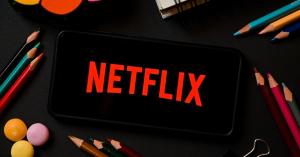While Americans are in desperate need of more economic relief to offset the impact of the coronavirus pandemic, economists warn that the stimulus check and other programs could potentially end up costing the country and its citizens in the long term. CNBC interviewed financial educator of Altamont Capital Partners, Sahil Bloom, about how stimulus packages will end up costing individuals down the line.
According to Bloom, the unprecedented stimulus efforts of this pandemic will set off a domino effect of likely economic phenomena, the result of which will be increased inflation. Bloom said that the ballooning federal budget deficit is likely to lead to increased inflation, which will eventually cost the American people on an individual level. By his analysis, this is how Americans will end up “paying back” their stimulus check, in some ways.
Videos by PopCulture.com
The federal budget deficit is reportedly hurtling towards a record-high $3.3 trillion this year and may climb even higher if the U.S. Congress passes a second stimulus check. In the past, large deficits have often led to increased inflation — meaning that the buying power of the dollar decreases. However, Bloom points out that the alternative could be just as bad or worse.
Bloom said that the stimulus checks were passed in the first place to counter “deflation” — a drop in the value of the dollar as people were spending less money. In fact, according to Bloom, the U.S. government actually wants to see some inflation at all times, targetting a rate of about 2 percent. It only becomes a problem to the status quo when the inflation rate far exceeds this amount.
This “hyper-inflation” is unlikely in the U.S., Bloom said. This is mostly thanks to America’s unique place in the global economy, as the dollar is the “global reserve currency” — the currency used by central banks and other financial institutions for international transactions.
The greater threat, he argues, is a rare economic phenomenon called “stagflation.” In this instance, inflation rates go up, while employment rates go down. This was reportedly the case in the infamous energy crisis and economic crash of the 1970s when skyrocketing oil prices nearly crippled the country.
The U.S. — and the rest of the world — are in a unique situation there as well, since there is little to be done about employment rates as long as the coronavirus pandemic rages on. At the time of this writing, the unemployment rate in the U.S. is 8.4 percent, according to the Bureau of Labor Statistics. When public spaces are allowed to reopen permanently, this number can begin to drop more reliably.
Most Viewed
-

LOS ANGELES – SEPTEMBER 4: BIG BROTHER Thursday September 4th on the CBS Television Network and streaming on Paramount+ (live and on-demand for Paramount+ with SHOWTIME subscribers, or on-demand for Paramount+ Essential subscribers the day after the episode airs)* Pictured L to R: Mickey Lee. (Photo by Mary Kouw/CBS News via Getty Images)







